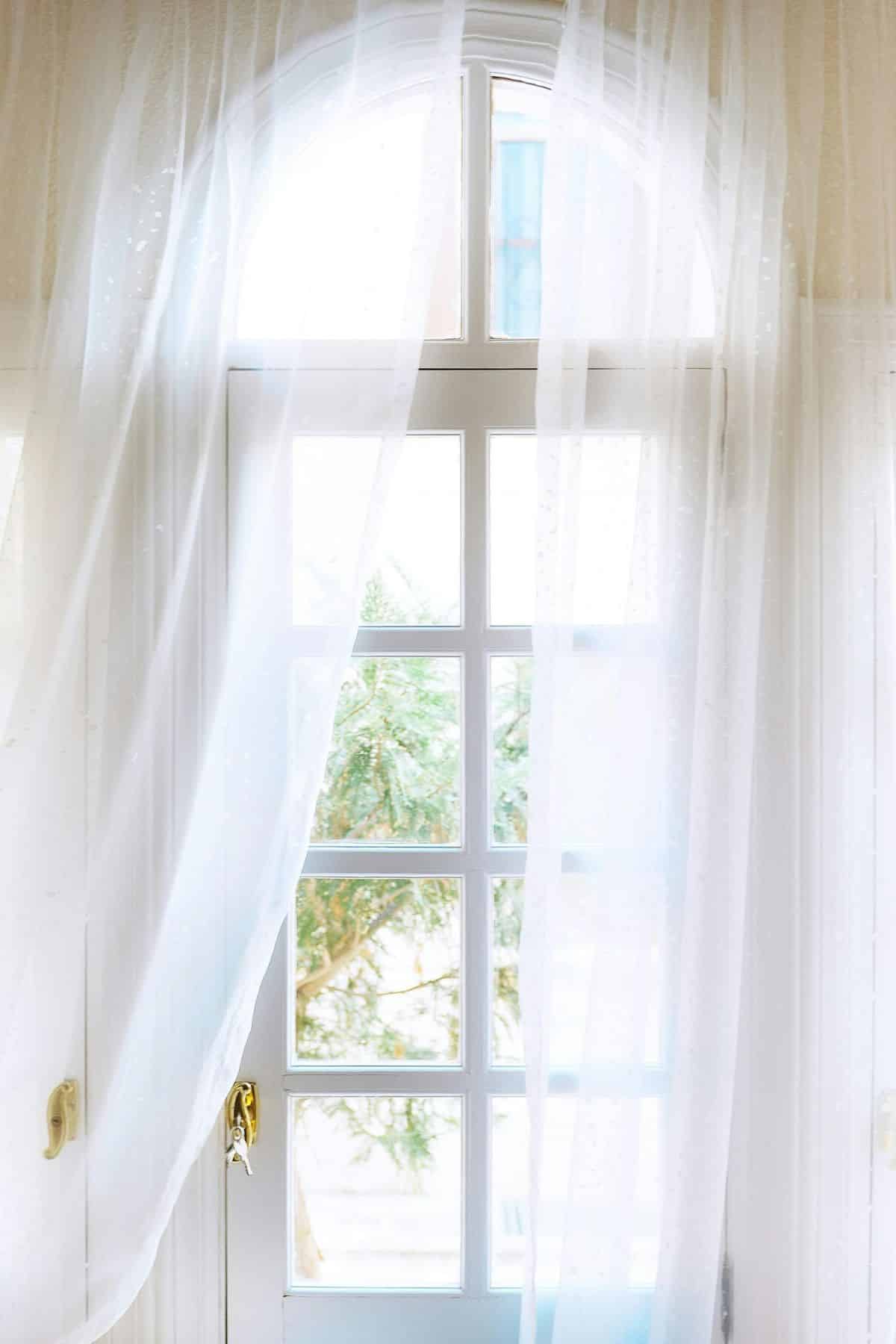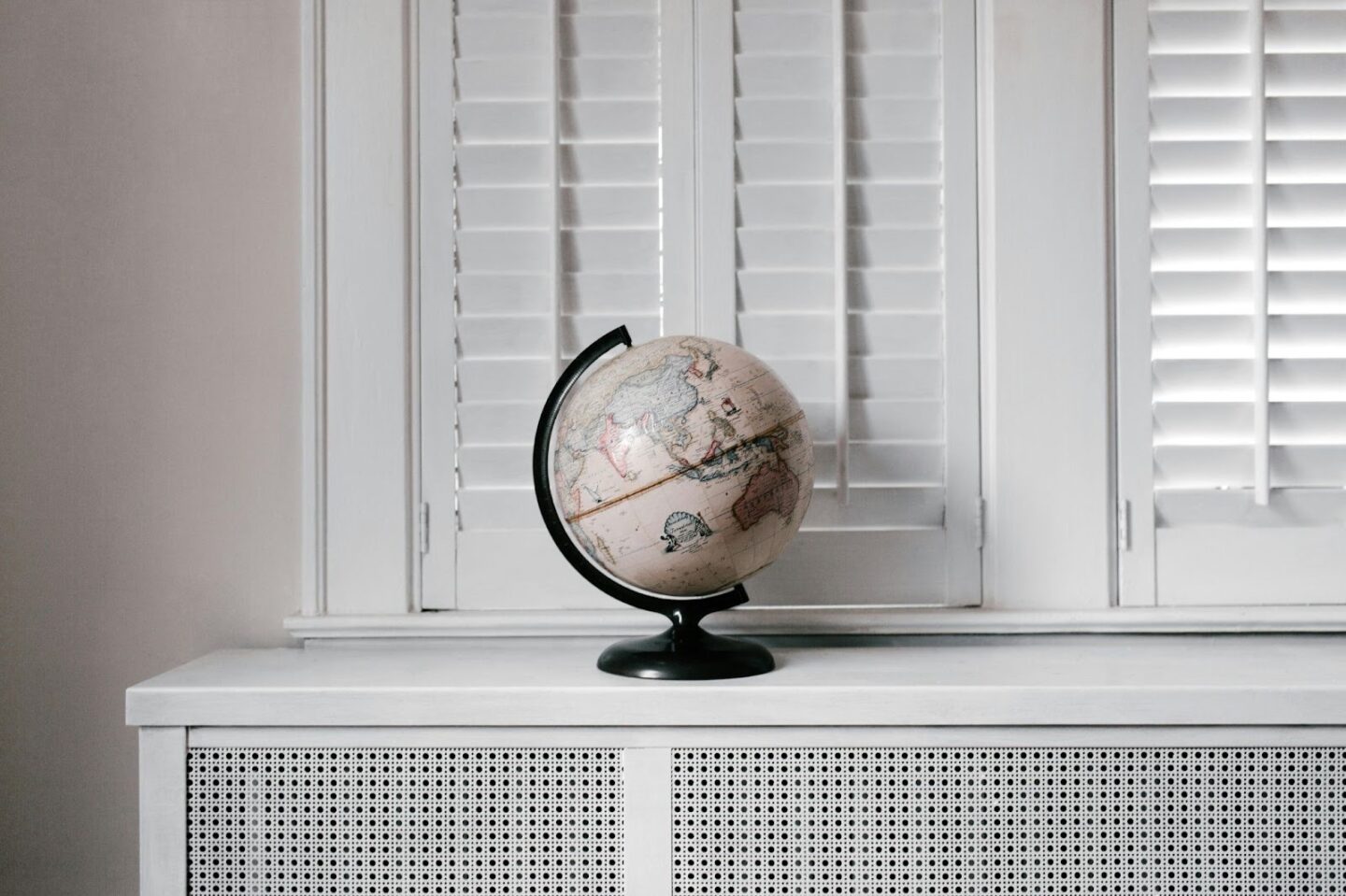
From voile curtains to storm shutters, there are many different ways to dress up windows around your home. Each of these window treatments can have different benefits.
A few different uses include privacy, light control, insulation, security and improved aesthetics.
Below are 12 of the most common window treatments compared.
Dressing Your Windows: 12 Window Treatment Styles Compared
Curtains
Also known as drapes, curtains are the most common type of window treatment. Made from soft fabrics like cotton or polyester, they can make a room feel cosier, and in some cases may even provide insulation.
They’re great for adding pops of colour to a room, however they can also come in many neutral shades. Some of the main types of curtains are included below.
#1) Room darkening
The most standard curtains are room darkening curtains, which block out about 70% to 80% of light. This keeps the room dark when the curtains are closed, but not pitch black. These curtains can come in various different lengths, fabrics and colours.
#2) Blackout
Blackout curtains are designed to keep out all light. They’re popular in bedrooms as they can help promote a deeper sleep. These curtains are typically floor length and usually come in darker colours and are made from thicker fabrics.
#3) Voile
Voile (or ‘sheer’) curtains are designed to let light through, while still offering some privacy. They’re translucent and are typically white in colour and made from a very thin fabric.
Voile curtains are sometimes paired with room darkening or blackout curtains for greater light control.
#4) Net
These curtains consist of a fabric mesh, which helps to let light through just like voile curtains, while similarly distorting the view into your home. Net curtains are regarded as a bit old-fashioned nowadays, but may still complement traditional windows in older homes.
Blinds
Blinds consist of slats or single panels that are designed to provide greater light control, while also offering a cleaner and more minimal look.
Whereas curtains hang from a rod above the window and are often longer/wider than the window itself, blinds hang from a headrail inside the architrave and are designed to only cover the window. This makes them more space-efficient, while also providing freer access to the windowsill. Blinds come in several popular styles.
#5) Venetian
Consisting of horizontal slats, Venetian blinds are the most common type of blinds. They offer excellent light and privacy control – you can raise or lower them, and fully adjust how open or closed you want the slats to be. They can be made from various materials including wood, aluminium or PVC.
#6) Vertical
These blinds consist of vertical slats and can be pushed to the side like curtains as opposed to being raised or lowered. This makes them a practical choice for sliding glass doors.
They are sometimes made from softer fabrics like polyester, but can also be made from hard materials like aluminum, and tend to have a more modern look than Venetian blinds.
#7) Roller
Roller blinds (also known as ‘shades’) consist of a single panel that can be raised or lowered by rolling it up around a roller at the top.
They can often provide greater privacy and opacity than blinds (‘blackout’ roller blinds are a popular option that work much like blackout curtains). It’s even possible to integrate electronic technology into roller blinds allowing them to be controlled with a remote or a smartphone app.
#8) Roman
Roman blinds function in a similar manner to roller blinds, but instead of wrapping around a roller at the top, they fold up into neat pleats when raised. This can give them a softer and more chic look than roller blinds. Roman blinds can be made from a variety of fabrics, including luxurious fabrics like silk.

Shutters
Shutters are a more permanent fixture that is typically attached to the side of the window frame. They are made from solid materials like wood or metal, and can often provide greater insulation and security than blinds or curtains. Some of the most popular types of shutters are listed below.
#9) Louvred
Also known as ‘plantation shutters’, louvred shutters are similar to venetian blinds in that they are made from horizontal slats.
However, whereas venetian blinds hang loose, louvred shutters are fixed to the side of the window frame or architrave. They can be installed on the inside or the outside of a window (remote control options are available for those that want the freedom of operating their shutters from their bed).
#10) Cafe
Cafe-style shutters are identical in design to traditional louvred shutters, but only cover the bottom half of the window. On tall windows, this can provide privacy while still letting sunlight in.
#11) Batten & board
The rustic shutters consist of wooden boards that open up like barn doors over windows. They are most commonly installed on the outside of windows, but can be installed on the interior.
Because of how they function, these shutters require a lot of clearance room – both in front and either side of the window.
#12) Storm
Made from metal like steel or aluminium, storm shutters are designed to protect windows from high force winds or debris. They are usually installed on the outside of windows and are operated via a roller like roller blinds. Storm shutters also have the benefit of providing security and are commonly used to protect shop windows.
Which window treatment should you choose?
It’s important to find a window treatment style that matches your home and the decor within the rest of the room. Some styles of window treatment are more traditional and better suited to older homes like batten & board shutters and net curtains, while others are more modern like vertical and roller shutters.
Make sure to also choose a window treatment that is most practical for your needs. If keeping out light is a priority, blackout curtains and blackout roller blinds cannot be beaten. But if you want to encourage light in, stick to voile curtains or blinds or cafe shutters.
It’s worth noting that you can install more than one window treatment on a window. Many people use both room darkening and voile curtains, or curtains and venetian blinds.
This can help provide greater light and privacy control, but you need to make sure the window treatments don’t visually clash.
